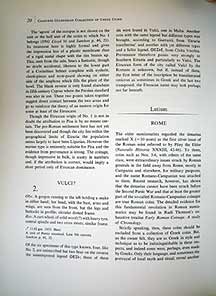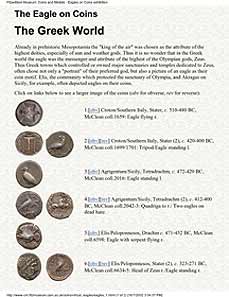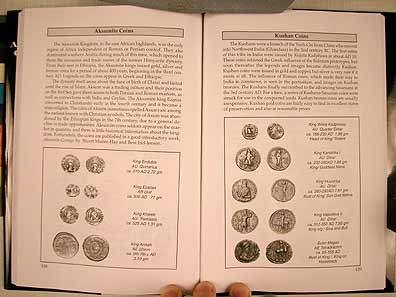
| Introduction | Classification of Numismatic Web Sites | The Web Sites | Conclusion |
Historical Characteristics of Money
Money has several important characteristics that make it a unique filter
through which to study history:
- Numismatic objects are primary documents and are relatively durable (for two reasons; relative large numbers produced increasing the likelihood of survival, and, for coins, their metallic composition).
- Numismatic objects represent value - either through their metallic content or through implicit or explicit promises to pay which they may retain into the present.
- The messages conveyed by money either through imagery or text represent temporal "snapshots" of the views and attitudes of the issuing authority.
- Numismatic objects in the form of coins were the first mass produced form of communication - and remained so for most of the next 3 millenia. Currency has the power to reach audiences much larger and more diverse than any other form of communication prior to the invention of the radio.
The web offers two distinct advantages in presentation to the numismatic historian; numismatic objects are small and can be displayed on the computer screen at several orders of magnification (thus making the imagery and text much more accessible than is ordinarily possible) and the ability to present several different images of enlarged details of an object. Both of these advantages can be realized in traditional formats, but at much greater cost and with less elegance. An example would be the standard format for scholarly printed works on numismatics that consists of the first section composed almost entirely of text followed by a section of plates, forcing the reader to constantly flip back and forth as they read through the work. Historically, this format was adopted for reasons of cost and ease of layout - numismatic articles and books often include dozens if not hundreds or thousands of images of coins that need to be reproduced on high quality paper in order to view the details of the objects, which are conventionally depicted at actual size.
 Page from A Catalog of the Calouste Gulbenkian Collection of Greek Coins, Volume 1, (text). |

Photographic plate from A Catalog of the Calouste Gulbenkian Collection of Greek Coins, Volume 1, (plates). |
Not surprisingly, this format has been widely copied on the web - particularly by traditional scholarly numismatic institutions, partly due to a disconnect between the technicians who create the web pages and the scholars who provide the content. Obviously, the web offers opportunities to strengthen the connection between the text and the objects, but I also believe that it offers advantages through freeing the form of numismatic histories from strict linear development. Interestingly, the design of numismatic websites seems to have begun to influence the layout of traditional numismatic works.
 Page from The Eagle on Coins web site. |
Page layout from Ancient Coin Collecting. |
